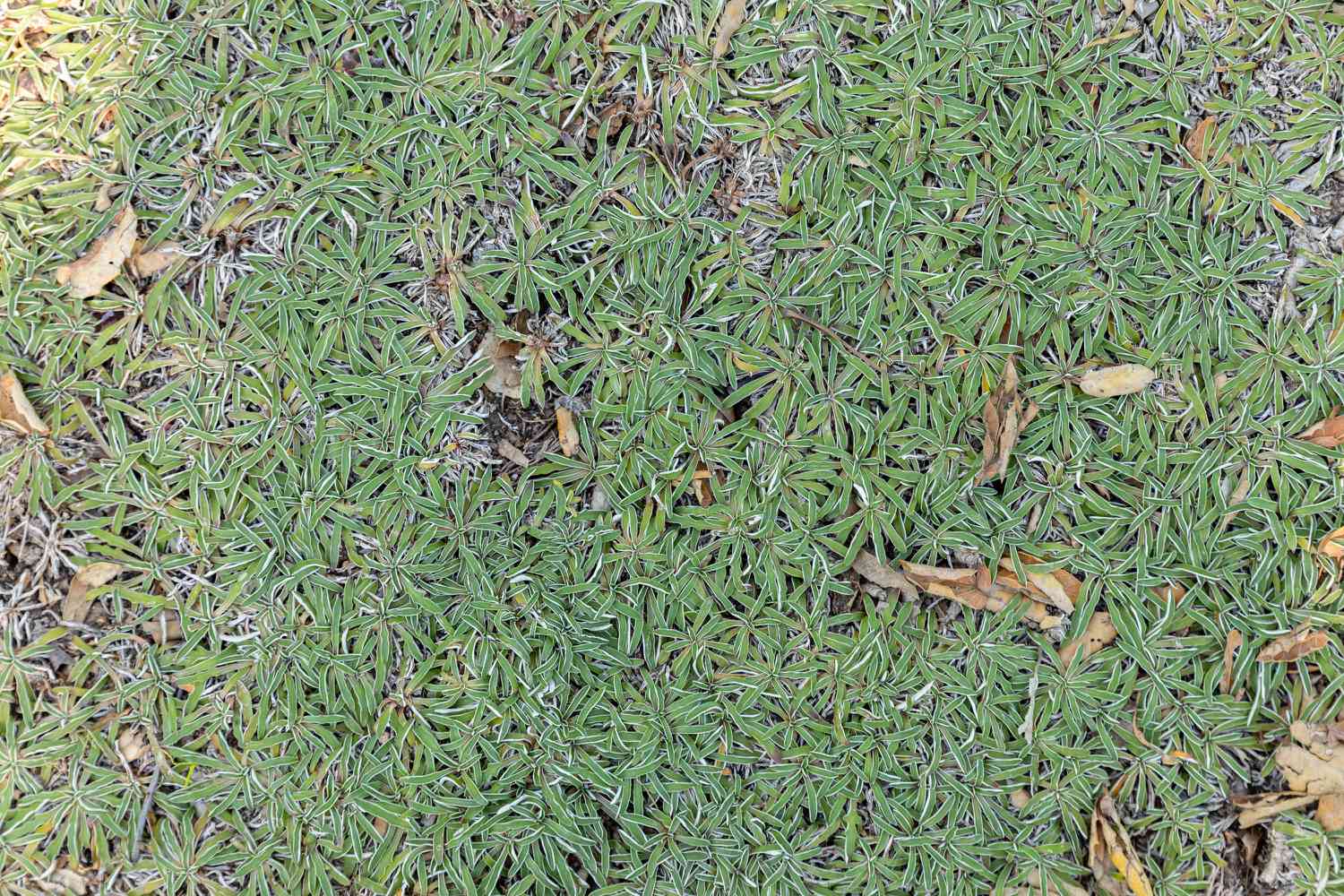
Dymondia is a remarkable plant that often goes unnoticed in the world of gardening and landscaping. This low-growing perennial offers a plethora of benefits and possesses some truly extraordinary qualities that make it a favorite for plant enthusiasts and professionals alike. Whether you’re looking for an excellent ground cover, a natural weed suppressant, or a beautiful addition to your garden, Dymondia has you covered.
In this article, we’ll uncover nine extraordinary facts about Dymondia that will surely pique your curiosity and leave you wanting to incorporate this amazing plant into your landscape design. From its origin to its drought-tolerant nature, there’s much to learn and appreciate about Dymondia. So, let’s dive in and explore why this unassuming plant is capturing the attention of gardeners around the world.
Key Takeaways:
- Dymondia is a remarkable ground cover that naturally repels weeds, requires minimal maintenance, and is safe for pets and children, making it a perfect choice for a beautiful and hassle-free garden.
- With its lush green appearance, drought tolerance, and ability to control erosion, Dymondia is an environmentally friendly and visually captivating option for landscaping, providing both beauty and practicality.
Natural Weed Repellent
Dymondia, also known as Dymondia margaretae, is a low-growing ground cover that possesses exceptional weed-repellent properties. Its dense mat-like structure and fibrous roots help to smother unwanted weeds, making it a popular choice for gardeners and landscapers seeking low-maintenance solutions.
Award-Winning Drought Tolerance
Dymondia is renowned for its impressive ability to withstand drought conditions. This hardy plant features succulent-like leaves that store moisture efficiently, allowing it to survive prolonged periods of limited water availability. Its resilience against drought has earned it accolades as an environmentally friendly and water-wise landscaping option.
Lush Green Carpet
One of the most captivating qualities of Dymondia is its lush green appearance, which resembles a beautiful carpet spread across the ground. The small, narrow leaves are silver-gray in color, creating an intriguing contrast against its bright yellow flowers that bloom in the spring. This makes Dymondia a visually appealing addition to any landscape.
Safe for Pets and Children
Dymondia is non-toxic and safe for pets and children, making it an excellent choice for households with active little ones. Unlike some other ground covers, Dymondia does not contain harmful chemicals or thorns that could potentially harm curious pets or children playing in the garden.
Low-Maintenance Wonder
If you’re looking for a low-maintenance ground cover solution, Dymondia is your answer. Once established, it requires minimal watering and infrequent mowing. Its spreading habit forms a natural barrier against weeds, reducing the need for constant maintenance and allowing you to spend more time enjoying your outdoor space.
Versatile Application
Dymondia can be used in a variety of landscaping applications, from filling gaps between pavers to covering large areas of ground. Its ability to tolerate light foot traffic makes it an ideal choice for pathways and between stepping stones, adding an aesthetic touch while providing a functional purpose.
Thrives in Full Sun
Dymondia thrives in full sun, making it an excellent option for areas with ample sunlight exposure. Its ability to withstand direct sun without withering or losing its vibrant colors is a testament to its resilience and adaptability.
Excellent Erosion Control
Dymondia is known for its extensive root system and ability to tightly bind the soil. This makes it an excellent choice for erosion control on slopes and hillsides, preventing soil erosion and stabilizing the land.
Environmentally Friendly Alternative
By choosing Dymondia as a ground cover, you are making an environmentally responsible choice. Its low water requirements and weed-suppressing abilities help conserve water and reduce the need for harmful herbicides, contributing to a healthier and greener ecosystem.
With its remarkable weed-repellent properties, award-winning drought tolerance, and visually captivating appearance, Dymondia is a versatile and low-maintenance ground cover option that offers numerous benefits. Whether you’re looking to enhance your landscape with a lush green carpet or seeking an environmentally friendly alternative for erosion control, Dymondia proves itself as an extraordinary choice.
Conclusion
Dymondia is truly an extraordinary plant, with its unique characteristics and versatility making it a valuable addition to any garden or landscape. Its ability to withstand high foot traffic, tolerate various soil conditions, and provide a lush and vibrant ground cover all year round sets it apart from other plants. Whether used as a lawn substitute, an accent plant, or a weed-suppressing ground cover, Dymondia is sure to impress both novice and experienced gardeners alike. So, if you’re looking for a low-maintenance, drought-tolerant, and visually appealing plant, Dymondia could be the perfect choice for you.
FAQs
1. Can Dymondia withstand heavy foot traffic?
Yes, Dymondia is known for its ability to withstand heavy foot traffic. Its densely growing foliage and resilient nature make it a popular choice for pathways and high-use areas in gardens and landscapes.
2. Does Dymondia require a lot of water?
No, Dymondia is a drought-tolerant plant that requires minimal watering once established. It is adapted to arid conditions and can survive on natural rainfall, making it a great choice for water-wise gardening.
3. Can Dymondia grow in different soil types?
Yes, Dymondia can tolerate a variety of soil types, including sandy, loamy, and clay soils. However, it prefers well-draining soil and may struggle in heavy, compacted soil that does not allow water to drain effectively.
4. How do I propagate Dymondia?
Dymondia can be easily propagated through division or by taking stem cuttings. Dividing the plant every couple of years can help promote its growth and spread, while stem cuttings can be rooted in moist soil or water to establish new plants.
5. Does Dymondia attract pests or diseases?
Dymondia is generally pest and disease resistant. Its dense growth habit and aromatic foliage help deter pests, making it a low-maintenance and hassle-free plant to grow.
6. Can Dymondia be used as a lawn alternative?
Yes, Dymondia is a popular choice as a lawn alternative. Its low-growing habit, ability to withstand foot traffic, and attractive appearance make it an excellent option for creating a lush and green ground cover.
If you're fascinated by plants that thrive in challenging conditions, check out our article on the desert spoon plant, a drought tolerant species with intriguing features. For those seeking low maintenance plants to brighten up indoor spaces, our guide to the best types of succulents is a must-read. Gardening enthusiasts won't want to miss our piece on the Chelsea Flower Show, which offers insights into cutting-edge garden design trends and inspiring displays.
Was this page helpful?
Our commitment to delivering trustworthy and engaging content is at the heart of what we do. Each fact on our site is contributed by real users like you, bringing a wealth of diverse insights and information. To ensure the highest standards of accuracy and reliability, our dedicated editors meticulously review each submission. This process guarantees that the facts we share are not only fascinating but also credible. Trust in our commitment to quality and authenticity as you explore and learn with us.


